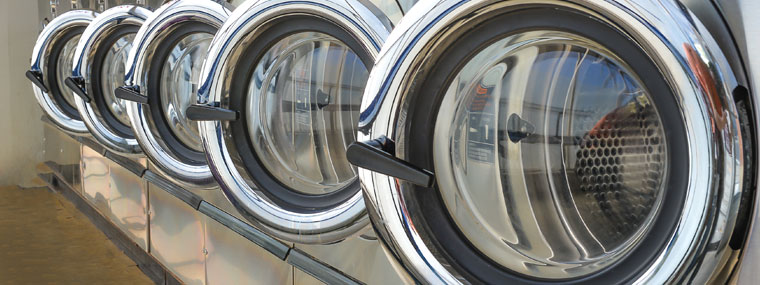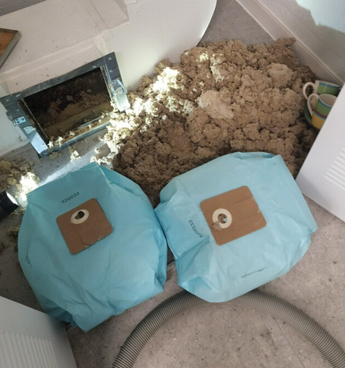
Whose Lint Is It Anyway?
By Joanna Ribner / Published January 2023

Lint is one of those items you really don’t think about unless you’re cleaning out your dryer screen, or you happen to get lint on your clothes. But you should be thinking about it! Lint is highly, highly flammable, and it builds up in the risers and dryer lines, creating an unseen fire risk. It is also “sticky,” clumping together and making it hard to move.
In a building with hundreds of units, all of them using dryers, literally pounds and pounds of lint can build up over time. It is not unusual for our company to remove 10 or more construction-style garbage bags of lint from a condominium building. This not only reduces the fire risk, but also can produce much more efficient drying times and performance, which also means a reduction in energy costs.
It seems like a no-brainer: But wait—there’s more. If your property has communal laundry rooms, then it should be a no-brainer to do regular (every two to three years) dryer vent cleanings. However, what happens when the property has washer/dryers in each individual unit?
Clearly, these machines are not intended for the use of all residents, so they cannot be considered association property covered by association dues. So each resident should be responsible for getting their own dryer cleaned, right? But each dryer has a horizontal line that connects with the main vertical line to the roof. That main vertical line IS association common property!
The obvious solution is to just clean the main vertical line, which the association is responsible for. There must be a vacuum that is powerful enough to vacuum up all of that sticky lint from the roof (which may be five floors up, or 50 floors up) to the lowest residential floor. Even the most powerful HEPA vac is only effective to about five to eight feet because of the stickiness of lint. Add to that the lint buildup in the horizontal lines from each unit, and you can start to see why “just cleaning the vertical line” would be a total waste of time and money!
If there is a blockage which is resulting in damp, wrinkled laundry and humid air being dispersed into residences, that block could be anywhere. Just because Unit 302 is having these issues does not mean cleaning out 302 will solve it. That block could be anywhere along the vertical line. Again, cleaning out one or two units is a waste of time and money.
These are questions that we respond to all the time from frustrated property managers, who are dealing with a board that does not want the expense of having to clean all of the dryer risers, and residents, who do not want to stay home (or allow maintenance into their unit) so that their dryer can be cleaned.
In a multi-family environment, the common good often has to outweigh the individual preference. The board has to weigh the benefits of having the dryer riser cleaned—more efficient performance leading to fewer complaints; better electrical consumption; and a greatly reduced fire risk—against adding this item to the budget and potentially having to increase monthly association dues. The good news is that most dryer risers only need to be cleaned every two to three years, with three years being sufficient for properties with a lot of part-time (snowbird) residents.
When you decide to have your dryer risers cleaned, here is what you should expect from the company you select to do the work:
- Your contract should include at least one “make-up” day to go back to any units that were missed the first time.
- Your contract should also include cleaning the fans on the roof (assuming it is a building with a flat roof.)
- The contractor should insist on having a member of your team go into each unit with the technicians for everyone’s safety.
- Damaged, cracked hoses should be replaced with new hoses.
Each unit should be moved away from the wall so the technician can vacuum out the horizontal line, and also vacuum out the vertical line approximately five to six feet in each direction. In this manner, the entire vertical line can be cleaned.
Keep in mind that lint is sticky. It is impossible to remove every bit of lint. The goal is to remove 80–90 percent of it, which will make a huge difference!
Joanna Ribner
Owner, Southern Chute
Southern Chute Inc. started operations in September of 2001 and now has offices in Fort Lauderdale and Ft. Myers. We are state-licensed sheet metal contractors, specializing in replacement of chute systems in existing buildings, and we clean dryer risers. A family-owned business run by Joanna Ribner and her brother-in-law, Sandy Ribner, we are proud of the long tenure of our staff and the loyalty of our customers. For true excellence, call the industry leader and innovator! For more information on Southern Chute, call (866) 475-9191 or visit www.SouthernChute.com.





